Family : Testudinidae

Text © Dr. Nicolò Pellecchia

English translation by Mario Beltramini
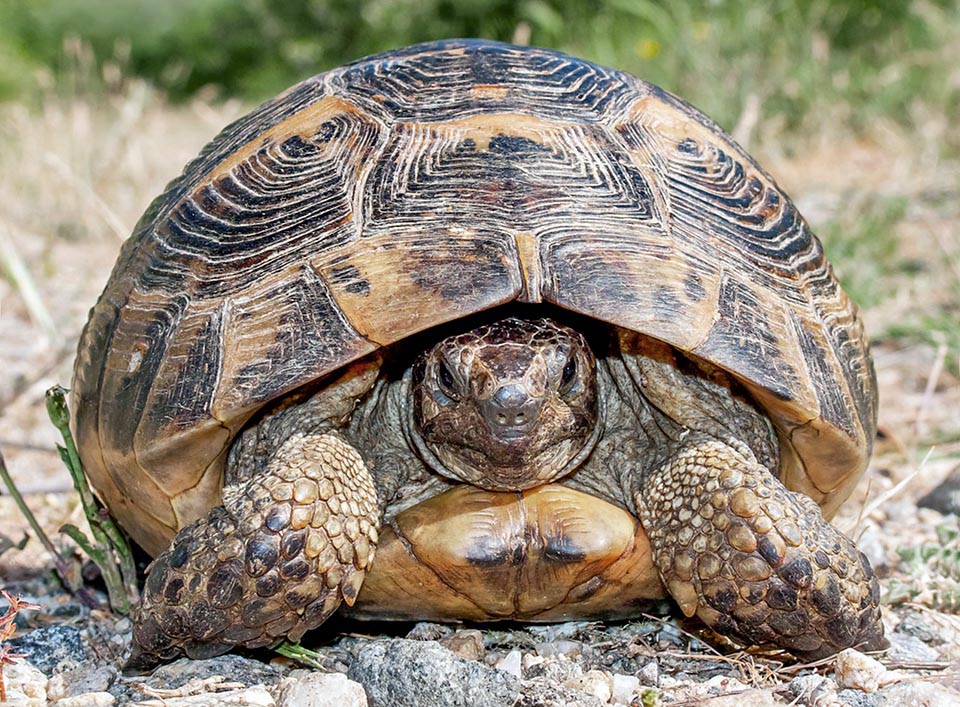
With an even 30 cm long carapace, the Greek or Spur-thighed tortoise, Testudo graeca has a very vast distribution in the Mediterranean area and in Middle East © Adam Gor
The Greek tortoise or Spur-thighed tortoise, Testudo graeca Linnaeus, 1758, “Greek tortoise” in Latin, is a reptile belonging to the order of the Testudines, commonly known as turtles, and being part of the family Testudinidae.
Zoogeography
The distribution area of this species is very vast, but is often attributable to introductions done by the man. The westernmost margins of its range are formed by Spain and Morocco, it expands to the east crossing southern Europe and northern Africa, until it reaches the Middle East.
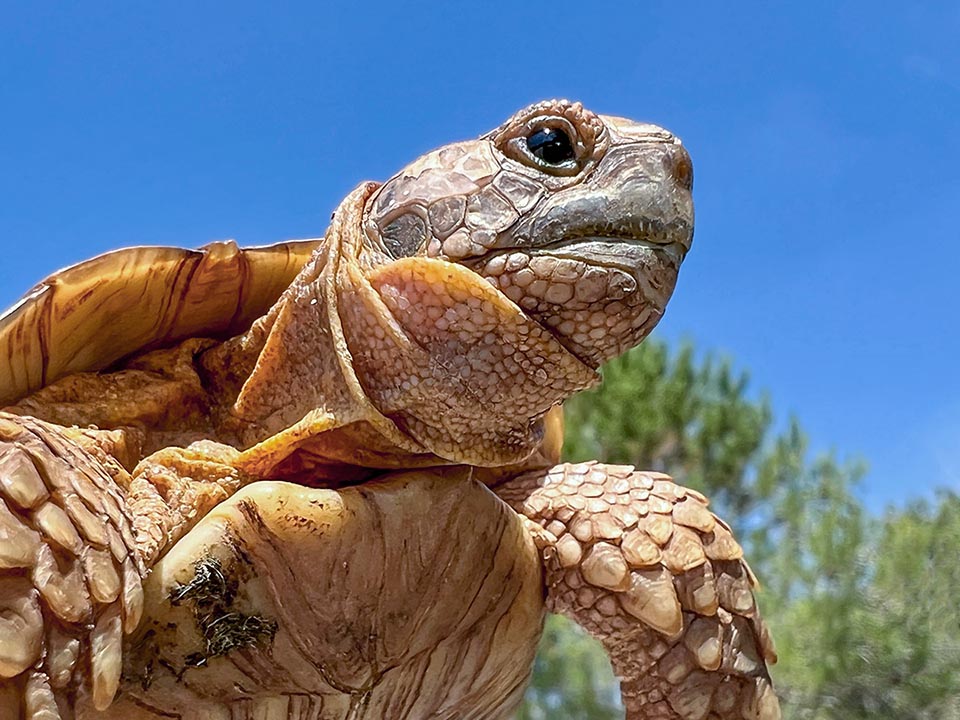
Can be found at the sea level, in retrodune environments, but also at 800 of altitude in western Mediterranean and 1300 in south-eastern Balkans © Franck Bonin
In the south-eastern Balkans do exist reports up to 1300 m of altitude, whilst in the western Mediterranean it settles along the coastal bands at heights not exceeding the 800 metres.
Ecology-Habitat
The Greek tortoise lives mainly in open zones, particularly warm and dry, but also in thermophilic woods, offering an alternation of sunny and shady zones. Usually, however, it can be found in an ample range of environments, like cultivated fields, meadows, subshrubs, retrodunal zones or coastal moors.
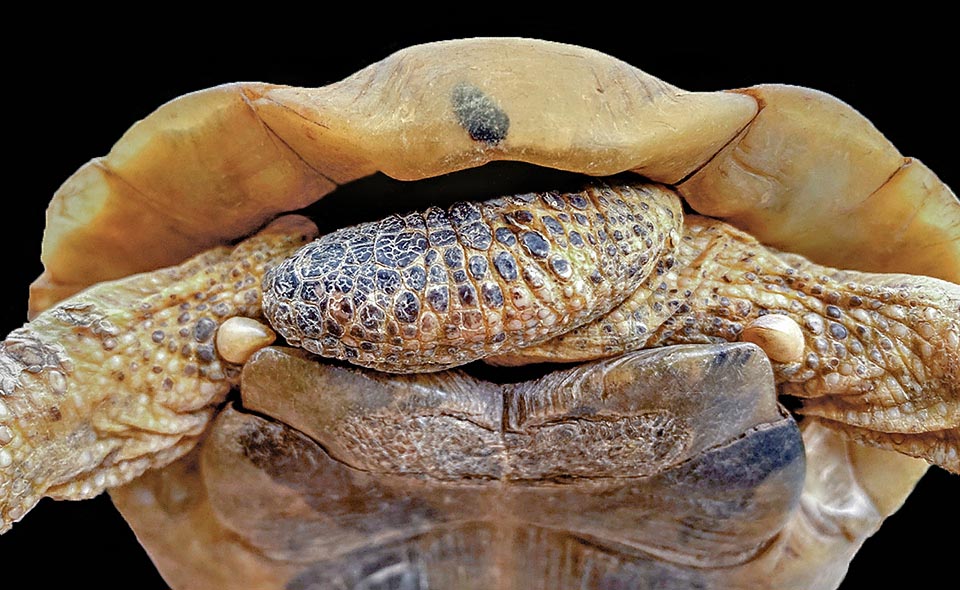
It differs from similar Testudo hermanni for the tail, without horny case, the thighs having a lateral spur and the supracaudal shield normally undivided © Franck Bonin
It is a diurnal species, with two main phases of activity during the day, one in the morning and one in the afternoon. It adopts a herbivorous diet, but does not ignore some meals based on invertebrates, such as gastropods or earthworms.
Morphophysiology
It has an about 25-30 cm long carapace. The colouring varies a lot, especially within the numerous subspecies. The colouring is not considered a reliable character for the recognition, for the intraspecific variability as well as for the resemblance to other species. The most diffused colourings for the carapace are: brown yellowish, olive brown or greenish with the presence of dark brown or black spots.
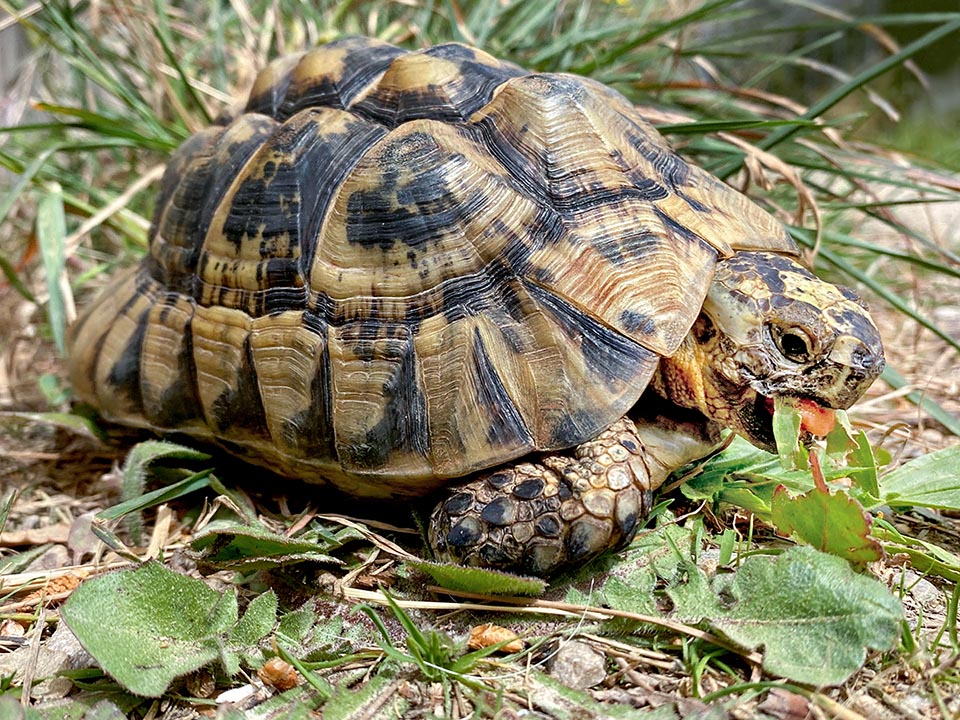
Testudo graeca has a herbivorous diet, integrated with some meal based on invertebrates, like gastropods or earthworms © Franck Bonin
Conversely, the ventral plastron is of yellow-brown colour, with the presence of black pigments. The characters that allow to distinguish the Greek tortoise from other similar species, such as Testudo hermanni (Gmelin, 1789), are the tail, that has no horny case, the thighs with a lateral spur and, the part of carapace located over the tail, the supracaudal shield, that usually is undivided.
Finally, Testudo graeca presents a sexual dimorphism in the body dimensions, with the males smaller than the females. M 15-25 cm, F 20-36.
Ethology-Reproductive Biology
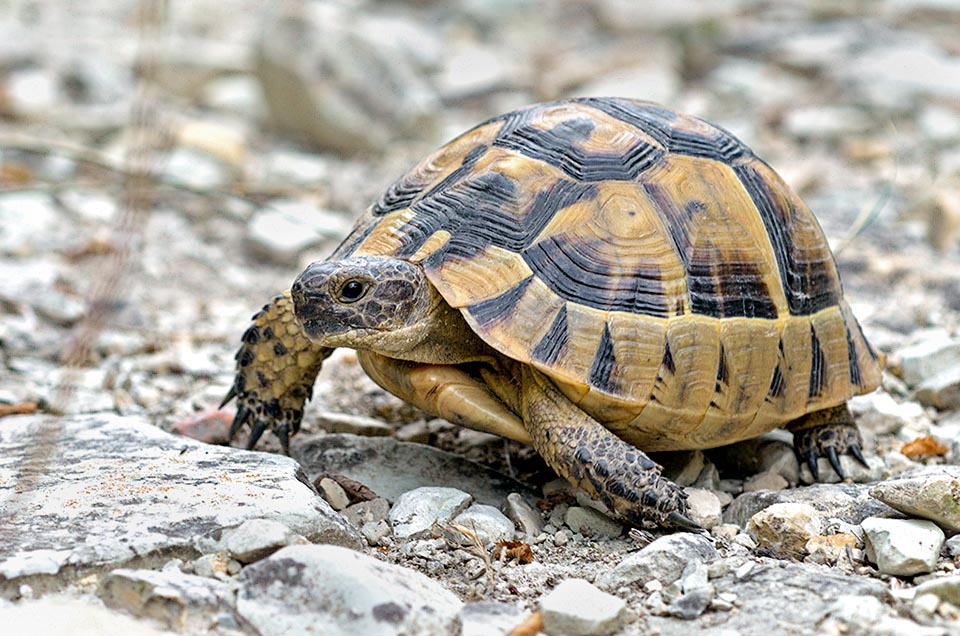
The carapace colour is quite variable: brown yellowish, olive brown or greenish with dark brown or black spots. The ventral plastron is yellow-brown with black pigments © Dmitry V. Ivanoff
The Greek tortoise may present hibernation and aestivation. phenomena. These phenomena are not recurrent in all populations of the species, but they depend a lot on the area where they are, and consequently on their climate. The hibernation usually occurs between November and March, whilst the aestivation takes place during the warmest months.
The mating period stands between April and May, during which the males get very territorial, trying to chase each other away if a female is present. Particular is the high-pitched cry emitted by the males while mating, that renders pleasantly noisy the reproduction areas. The laying of the eggs occurs in early June, after about 30-45 days from the mating.
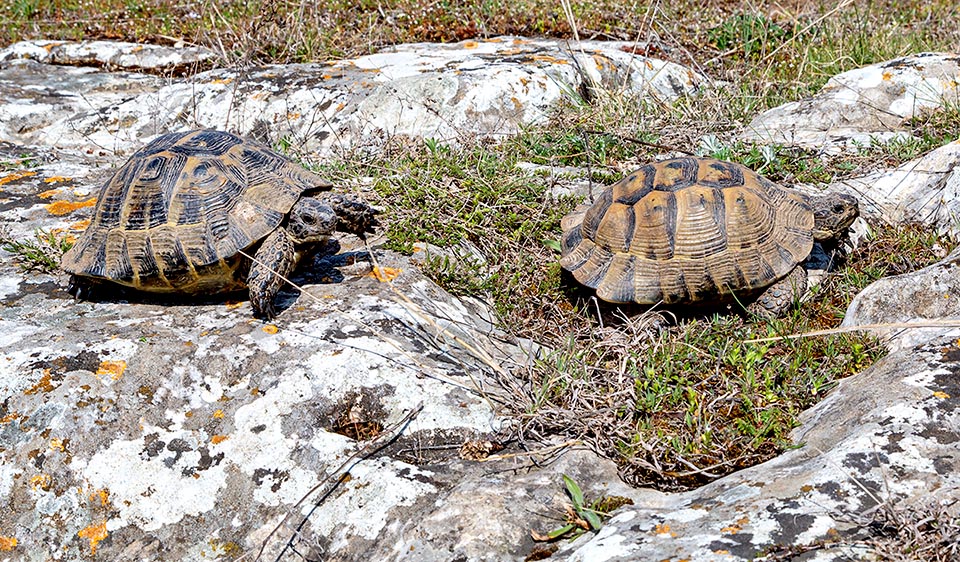
Love pursuit. At first sight there is not an evident sexual dimorphism, but the males are smaller than the females © Gregoire Dubois
The females may produce 4 to 15 egg broods, and have been observed up to 3 hatchings in a year.
Before laying eggs, the females dig a hole with their hind legs, where they will put the eggs. Like other reptiles, the eggs of Testudo graeca are temperature dependent, that is, depending on the temperature, a particular sex will develop. In the case of this tortoise, should the temperature be over 30,5 °C, the development of males would be more frequent, conversely, if lower, the females would be more frequent.
Small 3 cm long tortoises will begin to get out from the soil between late August and early September, presenting a carapace not as hard as that of the adults, but fairly morbid.
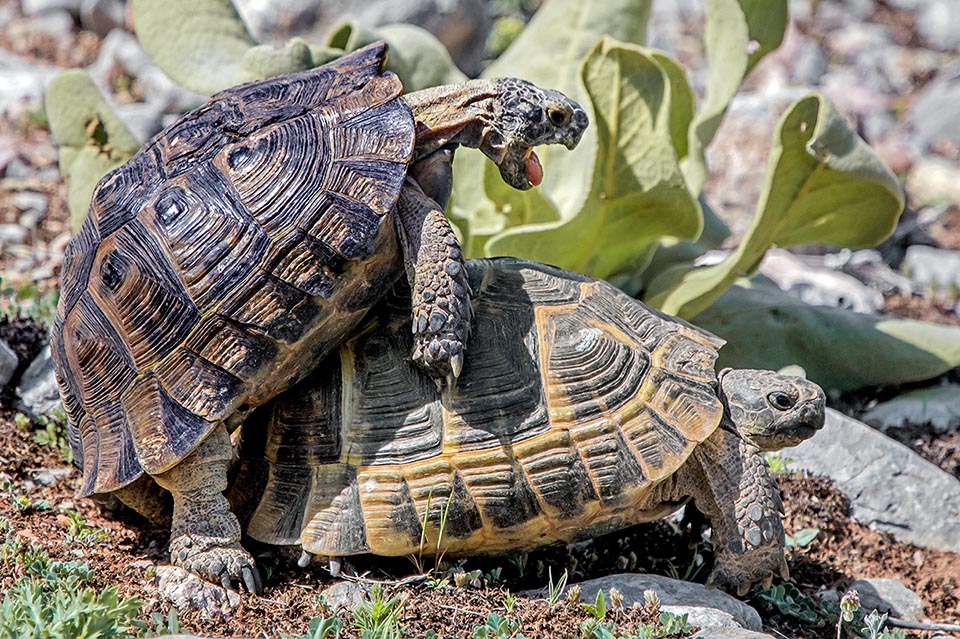
A mating. Even if the female can lay 4-15 eggs three times per year, Testudo graeca is reported a vulnerable in the IUCN Red List © Tim Melling
Conservation status
Testudo graeca has been given the category VU (vulnerable) of the IUCN Red List. The main threats to this species are the catches for the exotic pet market and the habitat modification, like, for instance, the retrodune environments.
Synonyms
The Greek tortoise has a high number of synonyms, mostly caused by taxonomic updates that have seen many taxa previously defined as species been moved to subspecies. The most easily found ones are: Furculachelys nabeulensis Highfield, 1990; Testudo antakyensis Perälä, 1996; Testudo armeniaca Vetter, 2002; Testudo anamurensis Vetter, 2002.
→ For general notions about Testudines please click here.
→ To appreciate the biodiversity within the TURTLES please click here.
